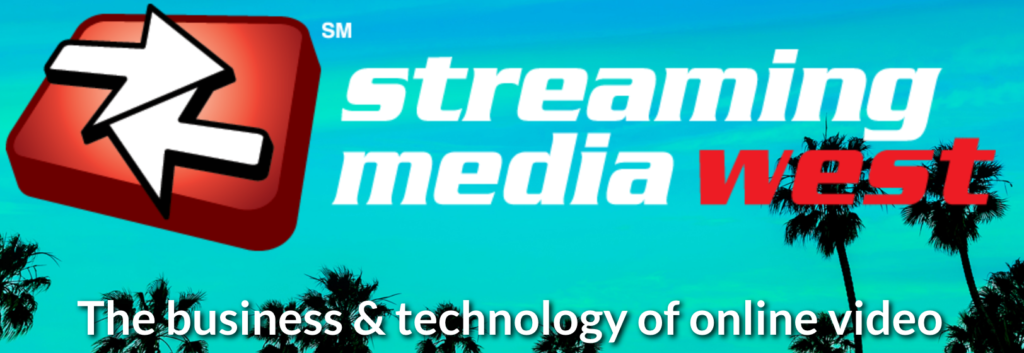As a consumer, I want a good user experience when I watch video no matter the platform or device I am using. It’s what all consumers want and something the online video industry has been promising for years. But when it comes to content that is supported by advertising, the market is completely broken, providing a crappy user experience. And it’s been this way for years, with no signs of getting better. In fact, it’s getting worse, much worse.
Because there are almost no standards in the online video advertising market, it makes for a very poor user experience. Every website seems to treat video advertising differently, be it the format, length, quality or functionality of the ad. Vendors that publishers use to deliver and track these ads promise things like targeting, and high-quality engagement, but they fall severely short. It’s the whole reason why the average CPM for non-targeted pre-roll videos has fallen over the years, and now hovers around $10. No advertiser wants to spend a lot of money, except in specific niche cases, because the targeting of the ad, the experience for the consumer and the metrics given back to the advertisers are so poor. Yes, there are some online sites that can charge $25 CPM for pre-roll and get it, but not many.
Day after day, site after site, I get the same pre-roll ad delivered to me ten times in a row. On sites like CNN, ESPN, NFL, etc. many times I get the exact same ad each time, all on different video clips. So either there is a lack of inventory by the publisher, which you then have to question why from a business standpoint, or the technology can’t tell it’s repeating the ad, which I know isn’t the problem. On some sites, the content I want to watch is available in HD quality, but the pre-roll ad is delivered in SD quality. Some websites will deliver a 4:3 ad inside a 16:9 player. One site will run a 30 second pre-roll ad before a video clip that is only 30 seconds in length, but another will stick to only 15 second pre-roll ads for content that is short-form.
Some versions of pre-roll ads will let you skip them, others won’t. And when it comes to the player itself, some ads you can make full-screen, others you can’t. Some you can pause and others don’t let you pause the ad at all. And then you have the problem on some sites that auto-play videos, that start with an ad, which don’t even let you turn them off. I will read an article on a website only to later notice that a video was playing someplace else on the page the whole time, and yet I didn’t see the ad or engage with the video at all. But an advertiser just paid to deliver that ad anyway. Last year, Google said that 46% of the video ads running across the desktop and mobile web (outside of YouTube) never had a chance to be seen. All online video advertising vendors talk about is engagement, and yet the metrics they all use to measure engagement are different or there is no real engagement taking place at all.
And for live streaming, it’s even worse. Server side ad insertion is very hard to do, many vendor solutions in the market do not work, and the consumer experience is poor. If I want to watch a live stream of an event that has already started, I want to get to the stream as quickly as possible because I feel like I am missing out. And yet as an example, for the DCN convention stream on FOXNews.com last week, I had to sit through the page loading, (6 seconds), the player loading the ad, (5 seconds) then the ad itself, (30 seconds), and then the live stream buffering (5 seconds). So 46 seconds after clicking the live stream link, I’m finally getting the content. What is it about that experience that publishers and video advertising vendors think is good?
Nine years ago I wrote a blog post entitled “The Five Biggest Technical Issues Hurting The Growth Of Online Video Advertising” and sadly, almost a decade later, the industry is struggling with the same issues. Nothing has truly changed. Seven years ago I was commenting that there is a shortage of online video advertising inventory, and that’s still a problem today. And the reason for all of this, the dirty little secret so to speak that no one wants to address, is that the cost of dealing with the ad network and technology is in most cases, larger than the revenue from the advertising. At a $10 average CPM, there isn’t a lot of revenue to split up amongst everyone that has to get a piece of the pie. Sure, a site like Hulu can do well with video advertising because of the content they have, but very few sites have content as valuable as Hulu. So you can get high CPMs in the $20-$25 range, but that’s only for high-quality video offerings, which isn’t vast majority of videos on the web.
Demographics is key with advertising, we all know that, and yet almost no targeting is taking place at all when it comes to online video advertising. I get ads for physical stores that aren’t within a hundred miles of where I live. I get ads for senior citizens, which isn’t me. Ads for kids products, which I don’t have. And now I know why so many ads start off with questions like, “are you…”, “do you…” etc. because they don’t know whom that ad is reaching. So not only is there a whole host of technical problems when it comes online video advertising that is preventing the medium from being truly successful, but we also have quite a few business problems as well. Hence why the usage of ad blocking software by consumers continues to climb.
Some will argue by telling me how big the online video advertising market is, but that doesn’t mean the consumer experience is a good one. It’s been a bad experience for the past ten years, and so far, I see nothing on the horizon that gives us any indication it’s going to get better. We’ve seen a lot of promises made, but very little in the way of actual advancement. So we all better get used to seeing the same non-targeted ad, over and over again, because they aren’t going to be going away anytime soon.
 The program for the next Streaming Media West show, taking place November 1-2 in Huntington Beach CA is now available for viewing, (day one – day two) with all of the session and presentation topics selected. Speaker placement starts today and will close out in about six weeks. If you are interested in one of the speaking positions, please download the program and reach out to me. Spots go fast, so the longer you wait, the less options will be available. I’ve added more how-to, case study and technical sessions to the West program this year with presentations from Facebook, Periscope, Twitter, Viacom, NY Times, LinkedIn, Google Chrome, Roku, Twitch, Tastemade and The Humane Society of the United States. Here’s a list of all the topics in the program:
The program for the next Streaming Media West show, taking place November 1-2 in Huntington Beach CA is now available for viewing, (day one – day two) with all of the session and presentation topics selected. Speaker placement starts today and will close out in about six weeks. If you are interested in one of the speaking positions, please download the program and reach out to me. Spots go fast, so the longer you wait, the less options will be available. I’ve added more how-to, case study and technical sessions to the West program this year with presentations from Facebook, Periscope, Twitter, Viacom, NY Times, LinkedIn, Google Chrome, Roku, Twitch, Tastemade and The Humane Society of the United States. Here’s a list of all the topics in the program:


